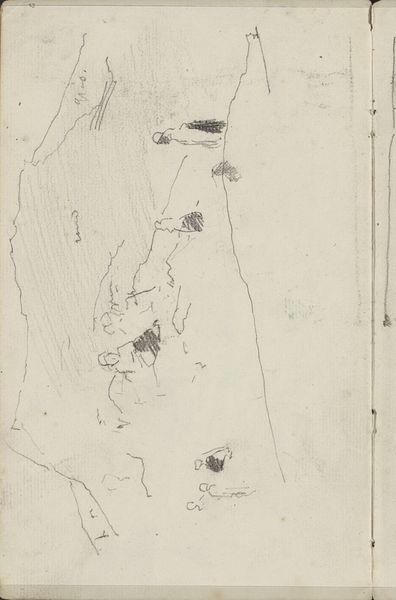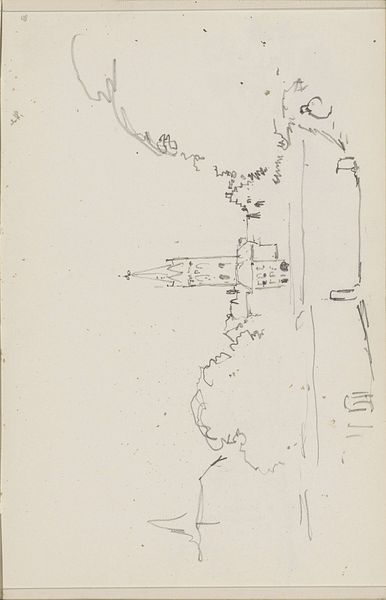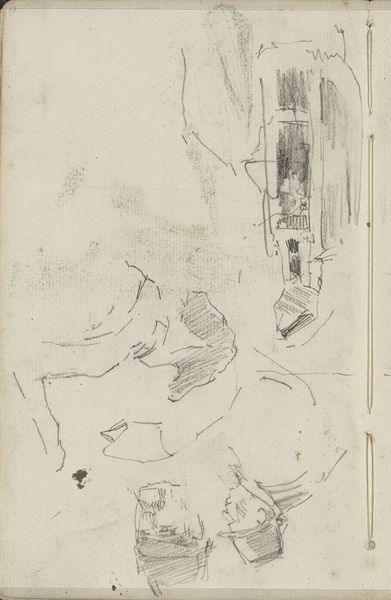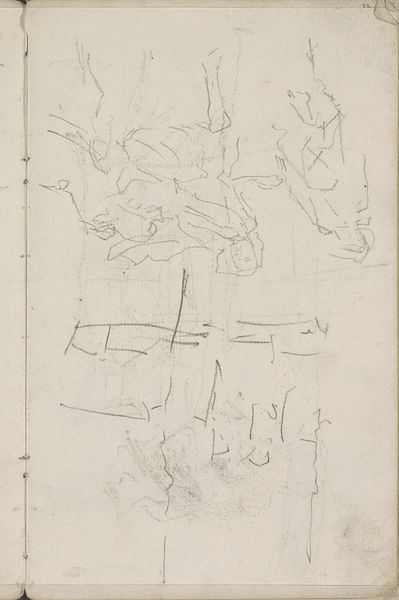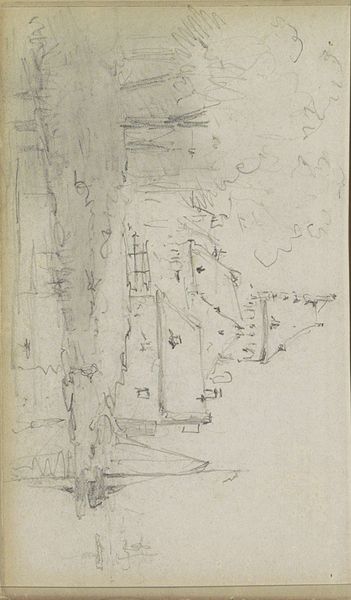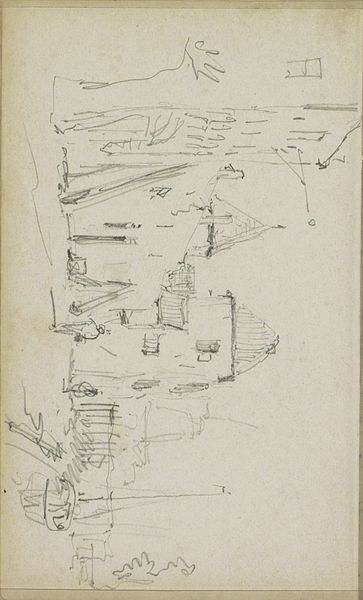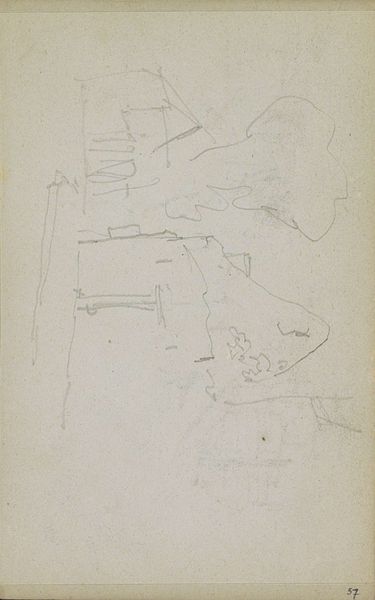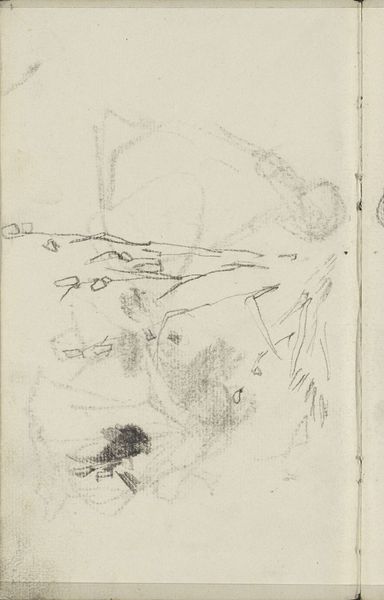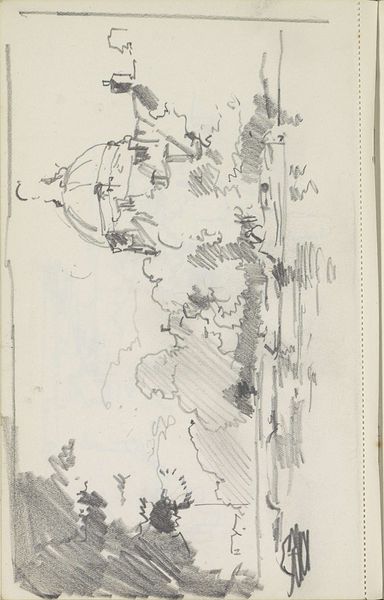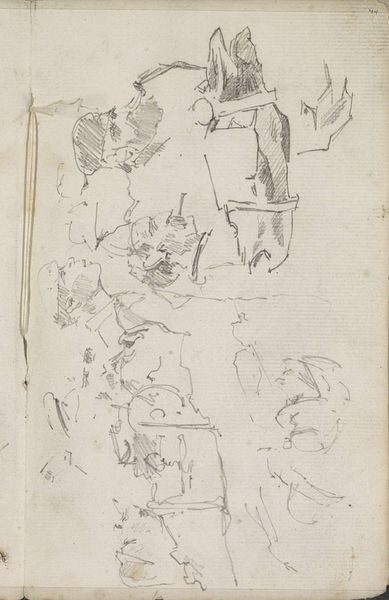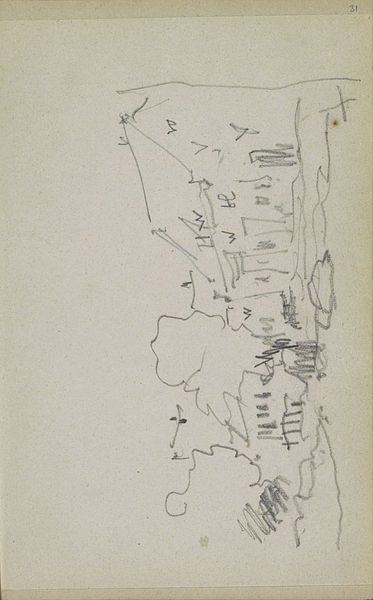
drawing, paper, pencil
#
drawing
#
impressionism
#
landscape
#
paper
#
pencil
Copyright: Rijks Museum: Open Domain
Editor: This is Figuren in de duinen, or Figures in the Dunes, by George Hendrik Breitner, from around 1880 to 1882. It's a pencil drawing on paper. It feels so raw and immediate, like a fleeting glimpse. What do you see in this piece? Curator: I see a reflection of the evolving relationship between the individual and the environment in the late 19th century. Breitner, like many of his Impressionist contemporaries, was grappling with the burgeoning urbanization of Europe, and sought refuge – or perhaps understanding – in the natural world. This sketch, with its sparse figures dwarfed by the dunes, speaks to a sense of alienation and perhaps even the precarity of human existence in the face of nature's vastness. The rough, almost hurried lines also connect to broader anxieties concerning industrial progress, the political turmoil and the quickly shifting cultural landscape. Do you get the feeling of people trying to come together? Editor: I do! They're huddled, almost blending into the landscape. So, you're saying the roughness reflects broader societal anxieties? Curator: Precisely! And consider the lack of distinct features. Breitner isn’t concerned with idealizing these figures; instead, he presents them as almost anonymous, stripped of individual identity. It forces us to question who has the power to own that landscape and, more importantly, who is being left out of the narrative. What do you make of how they relate to each other? Editor: It’s almost like they are seeking solace or a shared experience of confronting that immensity. Curator: Exactly. It could reflect the solidarity among marginalized groups, their collective resistance against social and political marginalization. These dunes become more than just a landscape; they are spaces of negotiation and resilience. Editor: This has completely changed how I see the sketch. It's no longer just a landscape, but a reflection of complex social dynamics. Curator: Art invites us to continually examine ourselves, our assumptions, and the world around us, challenging established power structures. That is why studying art and social movements is key.
Comments
No comments
Be the first to comment and join the conversation on the ultimate creative platform.
